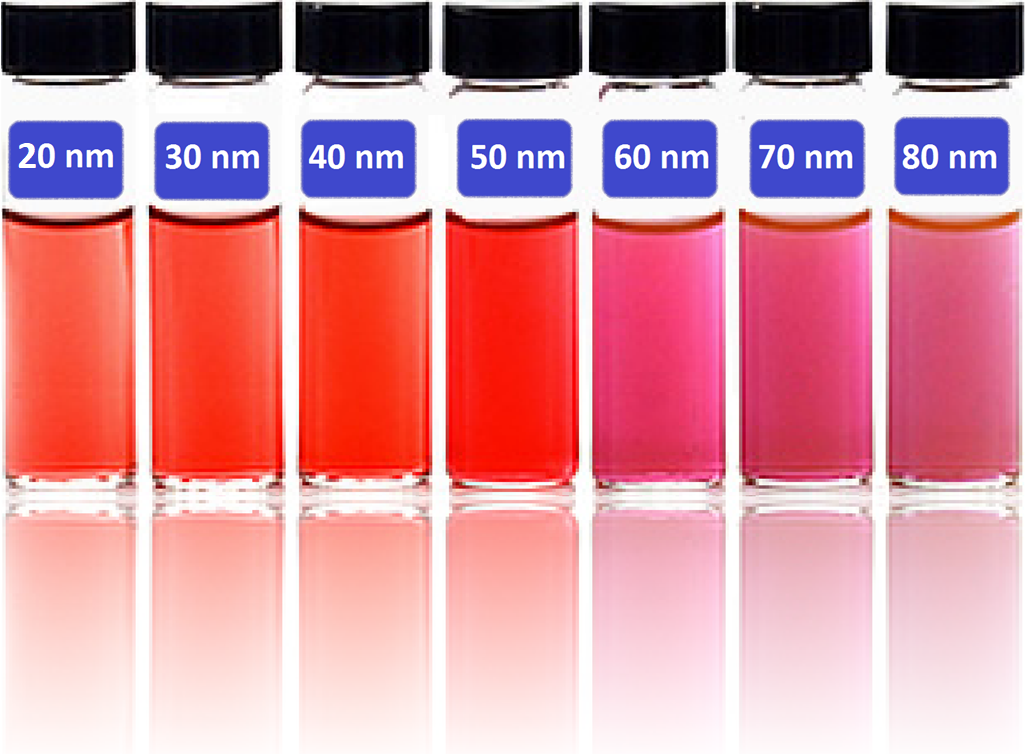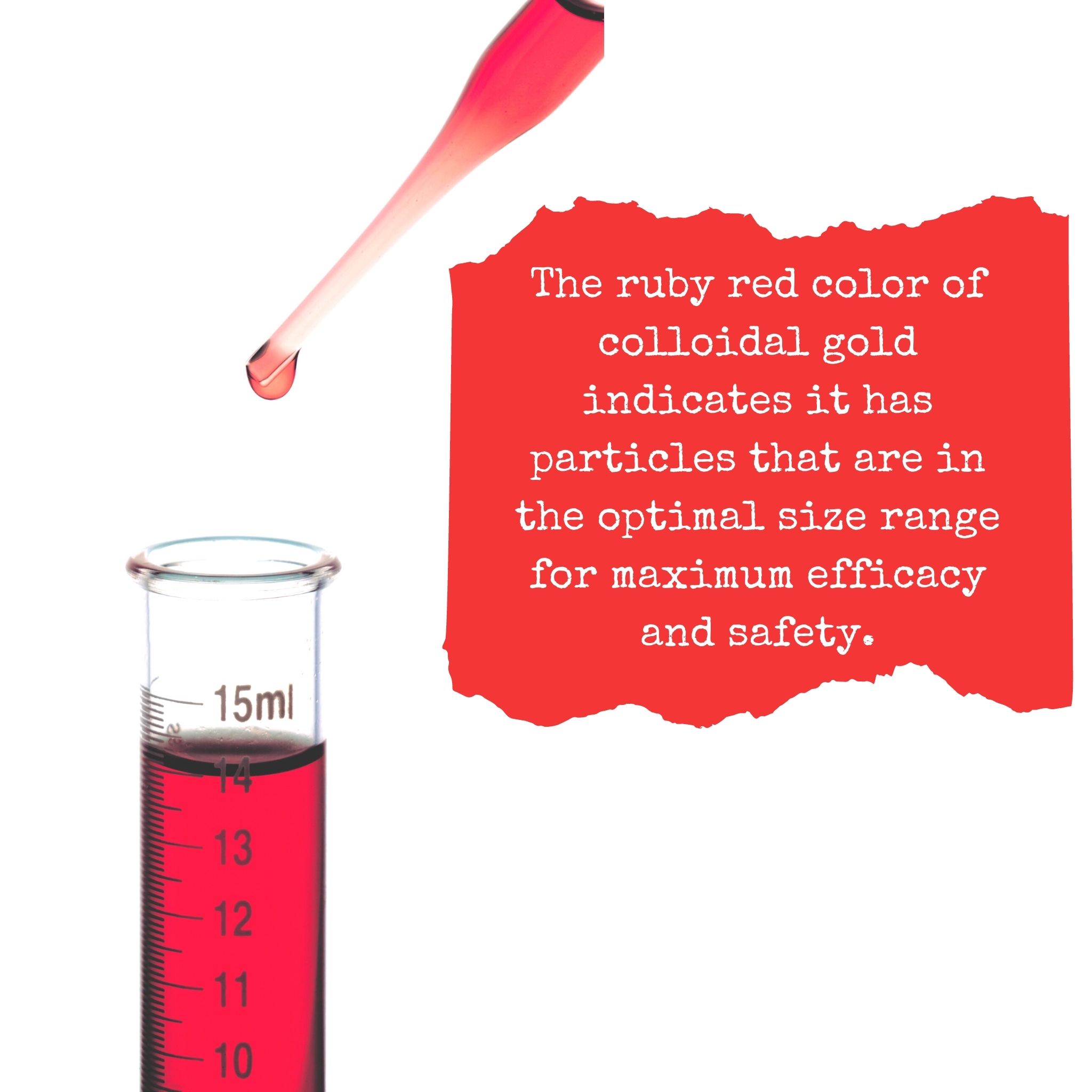
Unlock the restorative powers of nanotechnology with colloidal gold, an innovative natural supplement that intertwines ancient practices with modern science. This liquid suspension of gold nanoparticles promises various health benefits, from alleviating rheumatoid arthritis symptoms to enhancing cognitive functions and promoting tranquility.
Delve into this comprehensive guide that unravels the remarkable applications, benefits, and history of colloidal gold, and explore how this natural health elixir can optimize your well-being.

Colloidal gold is a liquid suspension of minuscule gold particles, commonly called gold nanoparticles. Nanotechnology, the science in which colloidal gold is rooted, involves particles ranging from 1 to 1000 nanometers in diameter, encompassing solids, liquids, or gases. To put it in perspective, 1 nanometer equates to 0.000000001 meters. The colloidal gold available as a mineral supplement typically consists of a suspension of gold nanoparticles in distilled alkaline water.
These tiny gold particles can penetrate cell membranes, relieving various clinical issues. Colloidal gold is deemed safe for daily use, both internally and externally, and it is also non-toxic for pets.
The color of colloidal gold varies from transparent yellow to transparent red or pink, depending on the size and concentration of the particles. Quality colloidal gold is typically ruby red, indicating small nanoparticle size and excellent bio-accessibility.
Colloidal gold has a shelf-life of approximately six months and should be kept in the refrigerator. It is best consumed within six months of opening to ensure efficacy. You can add colloidal silver, an antimicrobial, to colloidal gold to extend its shelf life.

The health benefits attributed to colloidal gold are numerous. Some of these include:
Anti-inflammatory and anti-aging: Several studies have demonstrated that colloidal gold has powerful anti-inflammatory properties. A study published in Materials Science and Engineering (2018) indicated that colloidal gold could potentially mitigate inflammation and accelerate wound healing.1
Cognitive function improvement: The human body naturally produces trace amounts of gold. This naturally occurring gold has been shown to help transmit electrical signals within the body, improving memory and focus. A small colloidal gold study using human participants showed a 20% increase in IQ scores after four weeks on 30mg colloidal gold per day.2
Rheumatoid arthritis alleviation: Colloidal gold has shown promise in reducing the symptoms of rheumatoid arthritis. A study conducted in 1997 revealed a significant reduction in joint swelling and tenderness after only one week of colloidal gold use.3
Colloidal Gold reviews on Earth Clinic and other health sites report these additional benefits:
While colloidal gold is generally safe, some people may experience mild side effects such as sleepiness and lightheadedness during initial use. Those with a skin allergy to gold should avoid consuming colloidal gold. Pregnant or breastfeeding women should consult a healthcare professional before starting new supplements, including colloidal gold.
The U.S. Food and Drug Administration (FDA) currently does not regulate colloidal gold or other colloidal minerals as it does for drugs. Therefore, manufacturers are not required to prove the safety or efficacy of their products. Consumers are encouraged to research and select products from reputable manufacturers.
The manufacturing process of colloidal gold involves the reduction of gold ions in a solution, often facilitated by adding a reducing agent. This process generates gold atoms that group together to form particles. These particles, suspended in a solution, create what we know as colloidal gold. It's worth noting that the process requires careful control to ensure that the nanoparticles produced are of the right size and concentration.
Like colloidal gold, colloidal silver is another popular colloidal mineral supplement. While colloidal gold is prized for its potential cognitive enhancement and anti-inflammatory properties, colloidal silver is often used for its antibacterial, antiviral, and antifungal properties.
Colloidal gold's intriguing saga spans diverse fields and numerous centuries. As far back as the Middle Ages, 'soluble gold'—a concoction containing gold salts—was hailed for its healing capabilities, offering remedies for a variety of ailments.
During the 17th century, Francis Anthony, a noted philosopher and medical professional, penned the treatise "Panacea Aurea, sive tractatus duo de ipsius Auro Potabili 2". This landmark publication divulged information regarding the creation of colloidal gold and its myriad medical applications. Continuing this trajectory, Nicholas Culpepper, a renowned English botanist, authored "Treatise of Aurum Potabile" in 1656, dedicating it entirely to exploring the medical potential of colloidal gold.
Fast-forwarding to the late 19th century, medical practitioners across Europe and the United States began resorting to colloidal gold for combatting illnesses like alcoholism, tuberculosis, and syphilis. The dawn of the 20th century saw German researchers discover that gold compounds could stymie bacterial growth. This pivotal breakthrough led to the genesis of gold-based pharmaceuticals for managing tuberculosis and rheumatoid arthritis.
Throughout the 20th century, the scope of colloidal gold extended to dentistry, where it was deployed for dental fillings and restorative procedures. Owing to its endurance, compatibility with oral tissues, and pleasing aesthetics, it quickly rose as a material of choice.
An intriguing chapter of colloidal gold's story unfolded in 1857 when scientist Michael Faraday began experimenting with gold leaf, creating a ruby-red solution termed "activated gold". This solution, admired for its fascinating light and matter properties, set the stage for colloidal gold and other colloidal systems like colloidal silver to be utilized extensively as labels for antigens in biological electron microscopy. In this context, labels are specific molecules that facilitate the identification of an antigen-antibody complex.
Fast forward to the present day, and colloidal gold finds widespread usage across sectors like electronics, nanotechnology, and imaging. Moreover, given its purported therapeutic advantages, its status as a natural health supplement is gaining traction. The unique optical traits, coupled with extraordinary electron and molecular recognition properties of gold nanoparticles, have piqued researchers' interest, particularly within biomedicine and nanotechnology. As current research delves into potential uses of gold nanoparticles, possibilities such as advanced cancer treatment and effective drug delivery continue to emerge.
The ideal dosage for colloidal gold can vary considerably, contingent on personal needs and the specificities of the referred studies. It is always prudent to adhere to the dosage guidelines mentioned on the product's label. As a general rule of thumb, one should initiate with a modest amount for the initial day or two and then gradually escalate to the recommended dosage.
As a personal anecdote, I consume 1-2 tablespoons of 20 ppm colloidal gold daily on an empty stomach, which has yielded satisfactory outcomes. I also administered a daily dose of one tablespoon to my dog, who passed in the summer of 2022 and weighed 55 pounds. It's important to highlight that each tablespoon of colloidal gold carries 300mcg of gold, much less than the 30mg often cited in some research. Nonetheless, this dosage has proven effective for my purposes and aligns with the dosage advice given by most colloidal gold manufacturers.
Regarding its sensory profile, colloidal gold is virtually devoid of taste, often compared to plain water. It's safe for both internal consumption and external application and suitable for use in pets.
Earth Clinic manufactures 20 ppm and 40 ppm pure ruby red colloidal gold, which is available on Amazon or in our shop here.
With its rich history dating back to the Middle Ages and its promising potential in modern health science, colloidal gold is a testament to the benefits of combining traditional wisdom with scientific advancement. However, more comprehensive clinical studies are needed to validate these benefits fully.
Continue reading below for feedback from Earth Clinic readers who have tried colloidal gold. Please send us your feedback!
References
